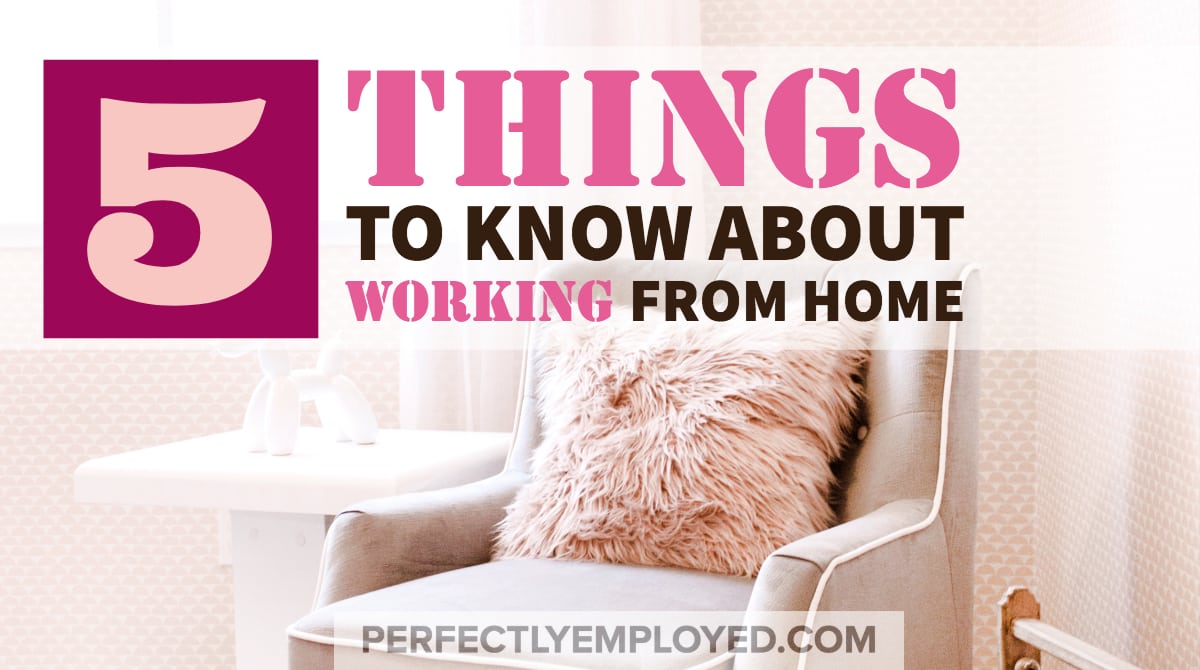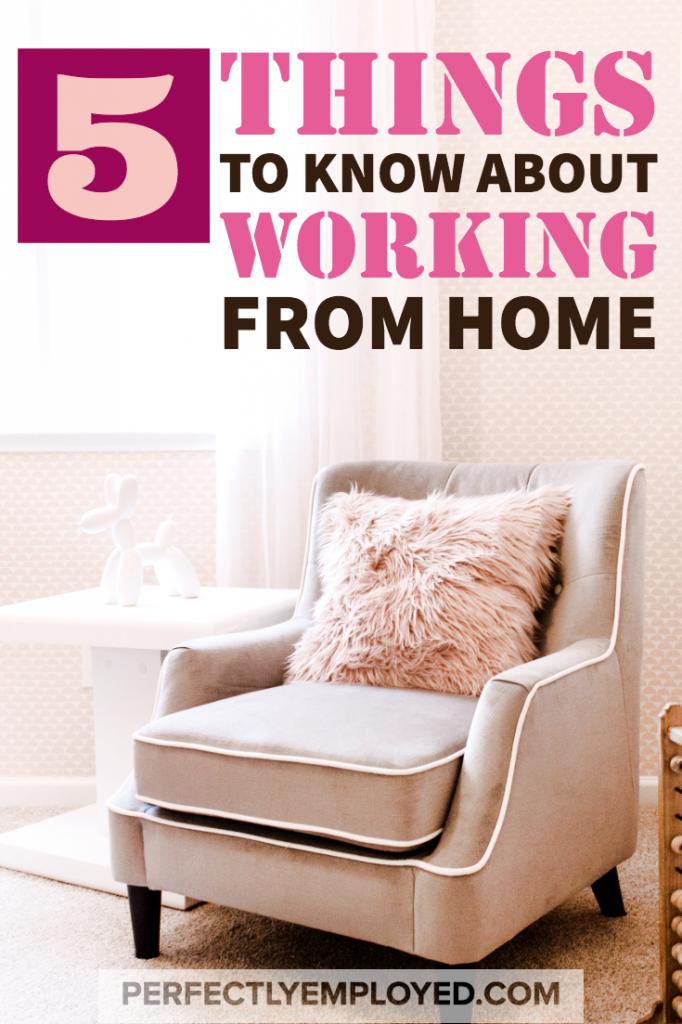
Most people envision working from home as sitting on the beach with a margarita while scrolling through Facebook on their phones. That would be wonderful, but it’s simply not true. Working from home is actual work…just from home.
Working from home may or may not help your work-life balance, but it will definitely end your morning commute. If you are considering working from home, there are a few things you should know before you make the commitment.
1. You Need a Workstation
To work from home efficiently, you need to set up a workstation. While working from home means that you can work in whatever room you want, you will likely need to take video calls with your boss or clients, and they will expect you to have a professional-looking backdrop when you do.
I staged my home office by painting the walls of a bedroom a warm shade of grey. I then situated my desk beside a window, with my computer’s webcam facing one of the pretty grey walls. Then, I hung thin frame shelves from IKEA on the wall in view of the webcam, and strategically staged my trophies, degrees, and random colorful “stuff” on the shelves. The finished look is polished and professional, and I generally only use the setup for web conferences.
The rest of the time, I work at the kitchen table, in an armchair facing my rose garden, or outside in the shade. Some myths about working at home are true—you really can work from anywhere, most of the time.
To create this kind of mobility, I actually use two workstations: A stable, 27-inch Macbook Pro in my home office facing the pretty wall, and a 15-inch Macbook Pro that I take quite literally everywhere. I even took it to the hair salon on Tuesday. I use an iPad pro for social media, research, and making graphics, too.
2. You Need a Business Phone
I’m not talking about a separate cell phone number just for your work—I mean a landline. Carrying two cell phones is madness and expensive. Plus, your cell phone connection isn’t always crystal clear and reliable.
Instead, contact your internet provider and ask for a landline number that you can use for conference calls and give out to clients. Landlines cost less than $20 per month and make an amazing back up during summer storms when cell signal drops. It’s more professional, all the way around.
3. Email will become Your Lifeline
While you might text your friends and live on Facebook’s Messenger, the business world still runs on email. Everywhere you go, your email will be with you on your phone or tablet. You will drive to the grocery store and check email from the parking lot. You will check email while waiting in the drive through at Starbucks. Remember the beach scenario with the warm ocean breeze and the margarita? Yeah, even on the weekend, you’ll be checking email. You need to become an expert at all things email, so consider MS Outlook training and master the art of email anywhere.
4. You Have to Plan Your Days
Yes, you can do the laundry during your work-from-home workday, but you have to plan your day carefully if you’re going to make it work. It’s one of the actions that can help you feel less stressed.
There are many ways to plan your day. I use both an electronic calendar and my iPhone’s reminders tool to make sure I never miss a meeting and I complete all tasks that need to be completed for the day. Find a calendar and reminder tool that works between your computer, phone, and tablet. The synchronization will keep you sane.
Related Posts that May Help You
- 9 Reasons I’m not Hiring You (Confessions of a Hiring Manager)
- Ditch Your Resume’s Objective
- Do You Have What it Takes to Land Your Dream Job?
- Enjoy More Flexibility in Your Career
5. You Must Treat Working From Home Like a “Real” Work Routine
Treat your work-at-home workday like any other normal, in-office working day. You have to set your hours over the course of the day, and set aside time for a lunch and other breaks. You have to have a set time that you’re going to be “off,” too. Keeping your sanity means having a point where work is done and you shut down your computer and do something else.
Setting boundaries for working hours can boost your work from home experience and productivity. If you have a home office, have a point in the day where you shut the door and walk away. On Friday afternoon, shut the door and don’t open it again until Monday. It’s harder to do than it sounds, but it’s vital to your work-life balance and overall well-being.
Save to Pinterest


